#Vice-Admiral Horatio Nelson
Text
#OTD in 1966 – Nelson’s Pillar in Dublin is blown up.
Nelson’s Pillar was erected in O’Connell St, Dublin in 1809 to honour the exploits of the British naval hero and notorious adulterer Vice-Admiral Horatio Nelson who was killed at the Battle of Trafalgar in 1805. The 134ft high monument became an integral part of the city, central to the country’s historic and literary epics, as well as being the meeting place for friends and lovers; it also…
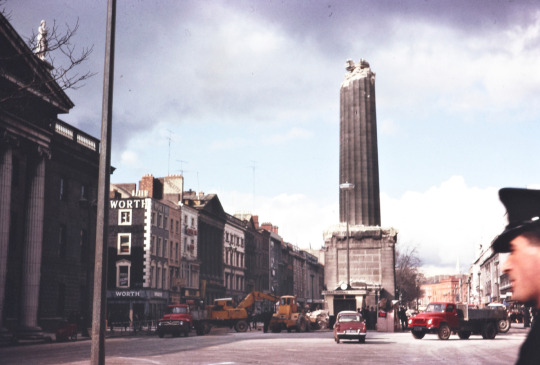
View On WordPress
#1916 Easter Rising 50th Anniversary#Bombing#British#Dublin#England#History of Ireland#IRA#Ireland#Irish History#Nelson&039;s Pillar#O&039;Connell Street#Up Went Nelson#Vice-Admiral Horatio Nelson
7 notes
·
View notes
Text

Life Mask of Vice-Admiral Horatio Nelson, 1758-1805, made 1800
67 notes
·
View notes
Text
A young Lord Nelson, with both eyes and both arms. A brilliant naval strategist, he quickly rose through the ranks of Britain's Royal Navy.


Lord Nelson as an aspiring young officer, and the uniform he died in.
#Lord Horatio Nelson#Royal Navy#Vice-Admiral#1st Viscount#Battle of Trafalgar#Napoleonic Wars#HMS Victory#uniform#military history#sea battles#1758 - 1805#heroism#UK
41 notes
·
View notes
Text
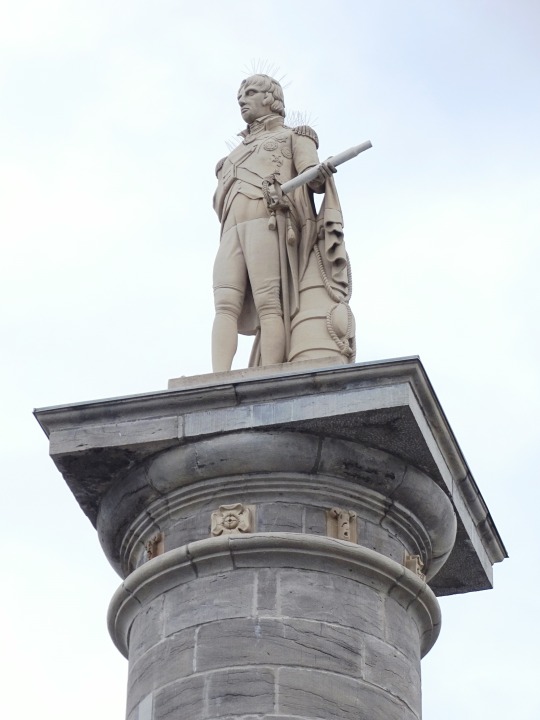
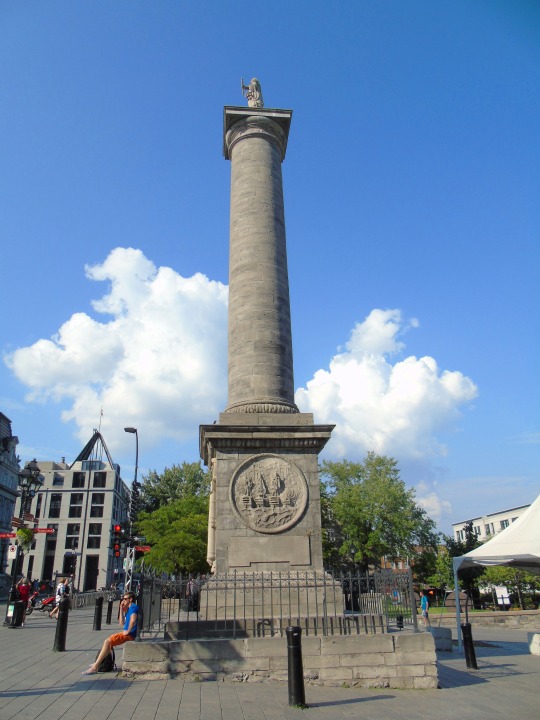

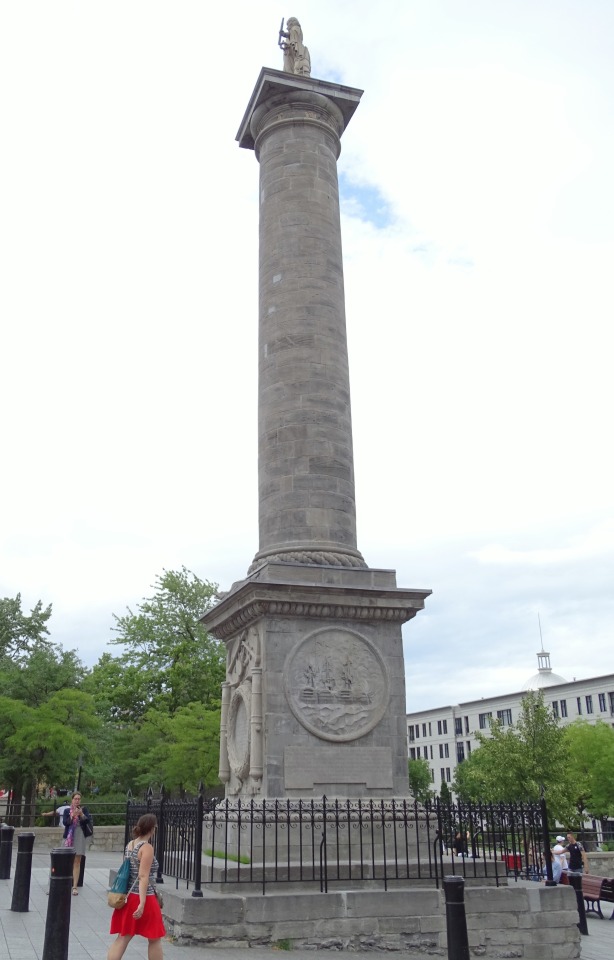


English Vice Admiral Lord Horatio Nelson, 1st Viscount Nelson, was shot and killed during his final victory at the Battle of Trafalgar near the port city of Cádiz on October 21, 1805.
Trafalgar Day
Commemorating a historic maritime clash and the valorous individuals who shaped the course of a nation's destiny.
A British commemoration of the victory of the Royal Navy over the French and Spanish fleets, Trafalgar Day seeks to pay honor to this important occasion that was a pivotal point in history. History buffs, navy fans, and just average people can all find ways to learn more and enjoy marking this momentous event!
History of Trafalgar Day
The Battle of Trafalgar took place on October 21, 1805, when the Royal Navy, under the command of Vice-Admiral Horatio Nelson, was able to triumph during the Napoleonic Wars, even though the British side had six fewer ships. This is considered the most important event on the calendar of the famous HMS Victory, which is the oldest commissioned warship in the world.
The cost of the Battle of Trafalgar was high, with approximately 1600 British seamen either wounded or killed in the battle, including Admiral Nelson who was mortally wounded. Even so, these tallies are small compared to the losses on the other side, where around 20,000 men from the Spanish and French navies were taken as prisoners of war, and almost 7,000 more were killed or wounded. Admiral Pierre de Villeneuve, the leader for the opposing side, was one of those who was captured.
Historians put the British win down to having a more well-trained group of seamen in the Royal Navy. After having been at sea together for at least two years, they knew exactly how to function as a team. In addition, the British sailors were well-trained in how to use their weapons, practicing firing their guns several days a week for many years in preparation.
While the Battle of Trafalgar was certainly an important victory, establishing the supremacy of the British Royal Navy for over a century, it wasn’t until 1896 that the legacy left behind by Admiral Nelson was duly recognized. The motivation behind the first celebration of Trafalgar Day more than 90 years later was brought on by the formation of the Navy League in 1894.
That first celebration in 1896 was commemorated all throughout the British Empire, with various festivities such as special dinners, parades and more. For more than 100 years, Trafalgar Day was a huge celebration for Britain, however it waned after the end of World War I in 1918, with the recognition of the devastating effects of war.
Although Trafalgar Day is still marked as a public day each year in Britain, it has been somewhat overshadowed by Armistice Day that is scheduled just ten days earlier on October 11, also known as Remembrance Day in the Commonwealth or Veteran’s Day in the United States.
In 2005, on the 200th anniversary of the Battle of Trafalgar, a special celebration took place, named Trafalgar 200. The celebration of the navy that year, including the International Fleet Review, was larger and more vibrant than usual.
In smaller circles, particularly those related to the navy, the evening of Trafalgar Day is still a time when the celebration of this important battle continues annually. The Royal Navy has the tradition of holding a Trafalgar Night dinner in the Officer’s Mess, with speeches, toasts and other activities to pay honor to the event.
While it is important to remember that every battle and war is always tragic, the protection the Royal Navy had for the British Empire in 1805 is also worth remembering on Trafalgar Day. After all, had the battle turned out differently, the history of Europe might have been very different as well!
How to Celebrate Trafalgar Day
Show some appreciation and honor for the Battle of Trafalgar by joining in on some observances with a few of these ideas:
Visit Trafalgar Square
Make a big deal out of Trafalgar Day by going to the place where the battle is memorialized – Trafalgar Square in London. This square was established in the early 19th century in the central part of the city, around the area called Charing Cross. The name was given in 1835 and, of course, it was named after the battle where Admiral Nelson led the navy to victory.
Since the 12th century, this area of land in London has been used for various public gatherings as well as political demonstrations. Today, Trafalgar Square still acts in those ways, and it also houses some important features of London, including The National Gallery, Nelson’s Column and the curious Trafalgar Square fourth plinth.
Learn More About the Battle of Trafalgar
Get to know about the battle that Trafalgar Day celebrates by learning a bit more about. Check out some of these interesting facts about the battle to get started with:
Though the Battle of Trafalgar was an important one in establishing the British navy’s control of the seas, it was another ten years until Napoleon was finally defeated at Waterloo, in 1815.
While the British fleet had only 27 ships and the French and Spanish fleet combined to a total of 33, they still won the victory. And the British also lost no ships in the battle.
This famous signal from Admiral Nelson was sent just before the Battle of Trafalgar: “England expects every man to do his duty.”
Visit a Royal Navy Museum
One excellent way to get involved with celebrating Trafalgar Day might be to learn more about British naval history up close and personal, by visiting one of the six locations of the National Museums of the Royal Navy. In addition to seeing galleries, looking at displays and learning from exhibitions, this museum is also all about the experience that allows visitors to get up close and personal.
The main museum is located in Portsmouth at the historic dockyard, while there is also a museum at Hartlepool. The Royal Navy Submarine Museum and the Explosion Museum of Naval Firepower can be found in Gosport, near Portsmouth. The retired HMS Caroline warship from World War I can also be visited in Belfast, Northern Ireland, while the Royal Navy Fleet Air Arm Museum is located on an airfield near Yeovilton.
Trafalgar Day FAQs
Where is Trafalgar?
Cape Trafalgar is a coastal headland that is located in the southwestern portion of Spain, on the Atlantic Ocean.
Where is Trafalgar Square?
Trafalgar Square is a public square located in Central London, in the city of Westminster, United Kingdom.
Who won the Battle of Trafalgar?
Britain won the Battle of Trafalgar against the French and Spanish naval fleets.
How did Admiral Nelson win the Battle of Trafalgar?
The battle against Napoleon was won for a number of reasons, but much of it due to superior training as well as better weapons.
Who are on the plinths in Trafalgar Square?
Three plinths have statues of King George IV, General Sir Charles James Napier, and Sir Henry Havelock. The fourth plinth was meant for William IV, but it was left empty due to lack of funding. Since 1998, it has had changing artwork.
Source
#Nelson's Column#Place Jacques-Cartier#Montréal#Québec#summer 2018#Admiral Horatio Nelson by Robert Mitchell#Vice Admiral Lord Horatio Nelson#shot#killed#died#death#21 October 1805#anniversary#history#travel#original photography#architecture#cityscape#City Hall#downtown#old town#tourist attraction#2015#landmark#public art#sculpture#Trafalgar Day
1 note
·
View note
Text

Horatio Nelson was a British flag officer in the Royal Navy. He is widely regarded as one of the greatest naval commanders in history.
1 note
·
View note
Text
The Coronation Procession
This week I spent a few days in London, so I decided to walk the route that the newly coronated King Charles III and Queen Camilla will take, called the Coronation Procession! The Kings Procession, before the service is this route, just in reverse. I took pictures of the highlights of the route, it will definitely be something to look back on in the future!

Westminster Abbey
Founded in 960 and consecrated in 1065, Westminster Abbey, has seen the coronations of 39 English and British monarchs and 16 royal weddings and is the burial site for 18 English, Scottish and British monarchs.

Whitehall, Downing Street and Horse Guards Parade
Whitehall is recognised as the centre of the Government of the United Kingdom and is lined with numerous departments and ministries, including the Ministry of Defence, Horse Guards and the Cabinet Office. The Palace of Whitehall previously occupied the area and was the residence of Kings Henry VIII through to William III, before it was destroyed by fire in 1698; only the Banqueting House has survived. As well as government buildings, the street is known for its memorial statues and monuments, including the UK's primary war memorial, the Cenotaph and the Women of World War Two memorial.
Downing Street was built in the 1680s by Sir George Downing. For more than three hundred years, it has held the official residences of both the First Lord of the Treasury, the office now synonymous with that of the Prime Minister, and the Second Lord of the Treasury, the office held by the Chancellor of the Exchequer. The Prime Minister's official residence is 10 Downing Street, and the Chancellor's official residence is Number 11. The government's Chief Whip has an official residence at Number 12. In practice, these office-holders may live in different flats; the current Chief Whip actually lives at Number 9.
Horse Guards Parade is a large parade ground off Whitehall. It is the site of the annual ceremonies of Trooping the Colour, which commemorates the monarch's official birthday, and the Beating Retreat. Horse Guards Parade was formerly the site of the Palace of Whitehall's tiltyard, where tournaments (including jousting) were held in the time of Henry VIII. It was also the scene of annual celebrations of the birthday of Queen Elizabeth I. The procession will go past the entrance, not onto the parade ground.

Trafalgar Square and the Equestrian Statue of King Charles I
The square is named after the Battle of Trafalgar, a British naval victory in the Napoleonic Wars with France and Spain that took place on 21 October 1805 off the coast of Cape Trafalgar, southwest Spain. In the centre of the square is Nelson's Column built to commemorate Vice-Admiral Horatio Nelson's decisive victory at the Battle of Trafalgar over the combined French and Spanish navies, during which he lost his life. The monument was constructed between 1840 and 1843 to a design by William Railton. The statue of Nelson was carved from Craigleith sandstone by sculptor Edward Hodges Baily. The four bronze lions around its base, designed by Sir Edwin Landseer, were added in 1867.
The equestrian statue of Charles I is a work by the French sculptor Hubert Le Sueur, probably cast in 1633. It is considered the central point of London. Its location at Charing Cross is on the former site of the most elaborate of the Eleanor crosses erected by Edward I (one of 12, to commemorate his late wife, put in location throughout the route of her funeral procession stops back to London). The statue faces down Whitehall towards Charles I's place of execution at Banqueting House. It was commissioned by Charles's Lord High Treasurer Richard Weston for the garden of his country house in Roehampton, Surrey. Following the English Civil War the statue was sold to a metalsmith to be broken down, but he hid it until the Restoration. It was installed in its current, far more prominent location in the centre of London in 1675, and the elaborately carved plinth dates from that time.

Admiralty Arch
Admiralty Arch was commissioned by King Edward VII in memory of his mother, Queen Victoria, and designed by Aston Webb, who also designed the Victoria Memorial and the new façade of Buckingham Palace at the other end of the Mall. It once served as residence of the First Sea Lord and was used by the Admiralty.



The Mall, St James Palace and Clarence House
The Mall is the long red coloured road joining Admiralty Arch and Buckingham Palace. It has seen several huge celebrations such as Victory in Europe Day (8 May 1945), lots of state visits, parades and Jubilee celebrations. When the royal family stand on the balcony of Buckingham Palace, The Mall is packed from top to bottom of vast crowds. The surface of The Mall is coloured red to give the effect of a giant red carpet leading up to Buckingham Palace. This colour was obtained using synthetic iron oxide pigment.
St James's Palace is the most senior royal palace in London. It is the ceremonial meeting place of the Accession Council, the office of the Marshal of the Diplomatic Corps, as well as the London residence of Princess Anne, the Princess Royal and her husband, The Duke and Duchess of Edinburgh, Princess Beatrice and Princess Alexandra. The Proclamation Gallery (pictured above) is a part of St James's Palace, and it is used after the death of a reigning monarch. The Accession Council meets to declare the new monarch. Once the monarch has made a sacred oath to the council, the Garter King of Arms steps onto the Proclamation Gallery, which overlooks Friary Court to proclaim the new monarch.
Clarence House currently serves as the London residence of King Charles III and Queen Camilla. It has been Charles's residence since 2003. From 1953 until 2002 it was home to Queen Elizabeth The Queen Mother, and before her, it was the official home of her daughter, Princess Elizabeth, the future Queen Elizabeth II.

The Queen Victoria Memorial
The Queen Victoria monument and surrounding gardens were created between 1904 and 1924. The main statue was unveiled by King George V. As well as Victoria, there are statues representing courage, constancy, victory, charity, truth and motherhood. In summer the flower beds are filled with geraniums, spider plants, salvias and weeping figs. Scarlet geraniums are used to match the tunics of The Queen's Guard at Buckingham Palace. In winter time the beds are filled with about 50,000 yellow wallflowers and red tulips.

Buckingham Palace
Buckingham Palace has served as the official London residence of the UK’s sovereigns since 1837. Buckingham Palace has 775 rooms. These include 19 State rooms, 52 Royal and guest bedrooms, 188 staff bedrooms, 92 offices and 78 bathrooms. King George III bought Buckingham House in 1761 for his wife Queen Charlotte to use as a comfortable family home close to St James's Palace, where many court functions were held. Buckingham House became known as the Queen's House, and 14 of George III's 15 children were born there. Queen Victoria was the first sovereign to take up residence in July 1837 and in June 1838 she was the first British sovereign to leave from Buckingham Palace for a Coronation. Her marriage to Prince Albert in 1840 soon showed up the Palace's shortcomings. A serious problem for the newly married couple was the absence of any nurseries (for her nine children) and too few bedrooms for visitors. The only solution was to move the Marble Arch - it now stands at the north-east corner of Hyde Park - and build a fourth wing, thereby creating a quadrangle. The cost of the new wing was largely covered by the sale of George IV's Royal Pavilion at Brighton.
I then walked past the Royal Mews, where the Gold State Coach is being prepared for the Coronation. Then onto Hyde Park, then Kensington Gardens and finally Kensington Palace, which is the official London residence of the Prince and Princess of Wales and their children, the Duke and Duchess of Gloucester and the Duke of Kent. I then treated myself to a scrummy yet expensive piece of lemon cake from the Prada cafè in Harrods 🍰😋
information from wikipedia, royal parks and the royal family website
#king charles coronation#coronation procession#king’s procession#king charles iii#queen camilla#british royal family#on that day I did 33k steps 🫠
100 notes
·
View notes
Text
Today, the 21st of October is Trafalgar Day.

On this day in 1805, Vice-admiral Horatio Nelson of the Royal Navy commanded a fleet of British warships to defeat a combined force of French and Spanish vessels off the Cape of Trafalgar in Spain.
Lord Nelson gave his life during the fighting. While commanding his fleet from the quarterdeck of his flagship H.M.S Victory, he was hit by a sniper's bullet and fatally wounded, dying during the battle.
Trafalgar was one of Britain's biggest contributions to the Napoleonic Wars, and was a serious blow to French naval power.

#battle of trafalgar#trafalgar day#trafalgar#lord nelson#horatio nelson#royal navy#napoleonic wars#warship#on this day
23 notes
·
View notes
Text
Scottish Broadsword

LOCATION Royal Museums Greenwich
NUMBER WPN1195
MADE BY Unknown
ORIGINAL PRODUCTION DATE circa 1800
MEASUREMENTS
120 x 965 x 140 mm (sword)
20 mm x 808 mm x 45 mm (scabbard)
Scottish broadsword with a straight, double-edged, steel blade. The arms of the City of Mecklenburg in Germany are engraved on the tang on the reverse of the blade.
Sword belonged to Rear-Admiral L.R. Oliphant. The broadsword was given to Rear-Admiral L.R. Oliphant by a relative of John Scott, who was Secretary to Vice-Admiral Horatio Nelson (1758-1805) and was killed at the Battle of Trafalgar.
2 notes
·
View notes
Text
Outnumbered and outgunned, the British fleet should not have stood a chance against the combined French and Spanish fleets of Napoleon Bonaparte. Under the command of legendary Vice-Admiral Horatio Nelson, not only did the English achieve an incredible victory, they also changed the course of history, but sadly Nelson paid the ultimate price.
18 notes
·
View notes
Text

Salute the Brave: Lord Nelson KB. Who gave and eye, an arm and ultimately his life, defending his country.
England's Pride and Glory by Thomas Davidson 1894, the painting within a painting of Britain's greatest Hero - Vice-Admiral Horatio Nelson. (FTP)
4 notes
·
View notes
Text
people keep tagging my bi guys who don't know it post 'nelson' but i only know one nelson so my knee jerk reaction is always like. nelson?? vice admiral horatio nelson??? on my post about bisexual men?
20 notes
·
View notes
Photo
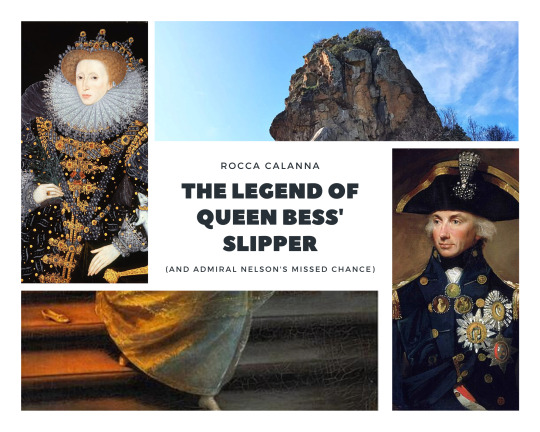
Legends from Sicily 1/?
The Legend of Queen Bess’ slipper
According to this peculiar Sicilian legend, Elizabeth I of England made a deal with the devil to get the chance to become Queen and reign for a long time. So when she died in 1603, after no less than 45 years of reign, the devils came to claim her soul and body and take it to Mount Etna, inside of which she would be thrown (as the volcano worked as one of Hell’s gates).
It was a long and weary journey for the devils, who despite being one step from the finish, had to rest on a hilltop called Rocca Calanna, nearby the town of Bronte and opposite the volcano. Once they caught their breaths, the devils completed their mission and casted the deceased Queen into Hell. They hadn’t realised, though, that one of Elizabeth’s precious slippers (made of gold and encrusted with precious stones) had fallen to the ground the moment they had picked up the body and resumed their journey.
A sheepherd grazing his flock nearby saw the scene and, once the devils were far away, reached for the slipper, which burned his hand. The sheepherd then called for a priest whom attempted an exorcism. Not only the ceremony didn’t work, but the slipper literally flew away, landing on one of the towers of Maniace Abbey.
Chance would have that, two centuries later, Maniace Abbey (turned into an aristocratic residence) was donated to Vice-Admiral Horatio Nelson as a thanks to have defended the island of Sicily from Napoleonic invasion (which had already costed Ferdinando I of Two-Sicilies the peninsular part of his kingdom).
One night, according to the legend, Nelson (who, in reality, never stepped foot in his Sicilian dominion) met a mysterious and beautiful young woman who handed him a box (containing of course the magical slipper) and ordered him to never open it. But Lady Emma Hamilton, Nelson’s lover and this legend’s Pandora, curiously opened it. The mysterious woman then once again appeared to Nelson, reproaching the man of having wasted away an immense gift, and that this would have costed him his luck and life. As it was foretold, a couple of days later, on October 21st 1805, Horatio Nelson died during the (victorious) battle of Trafalgar.
The magical slipper’s whereabouts are, of course, unknown.
#historicwomendaily#legends and folklore#elizabeth i#elizabeth i of england#sicily#horatio nelson#emma hamilton#myedit#bronte#rocca calanna#Province of Catania#etna#legendedit
4 notes
·
View notes
Text

Capt. Henry Blackwood (Keith Lovett, left), Vice Admiral Horatio Nelson (Alex Naylor) and Capt. Thomas Masterman Hardy (Ian Bloomfield, right), July 2005
#naval history#naval reenactment#captain blackwood#captain hardy#vice admiral horatio nelson#age of sail
41 notes
·
View notes
Text
Battle of Trafalgar
Horatio Nelson was the commander of the British fleet on HMS Victory. His French counterpart was Vice-Admiral Pierre-Charles Villeneuve on board the French flagship, the Bucentaure.
10 things you might not know about the Battle of Trafalgar:
1 note
·
View note
Photo


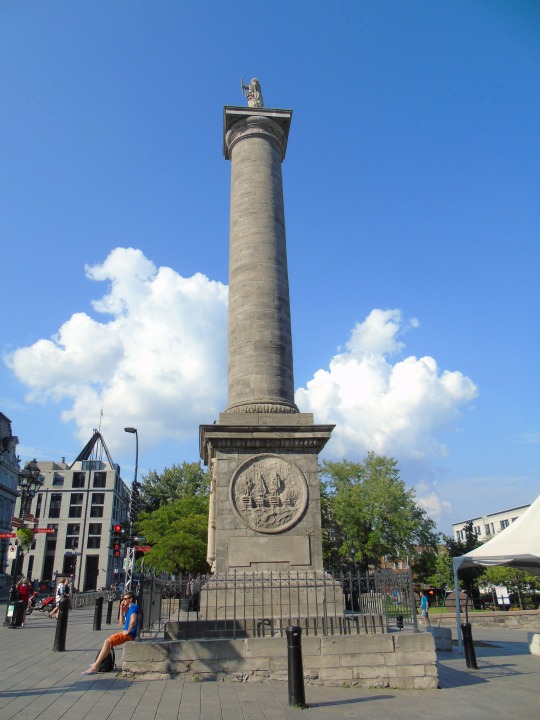


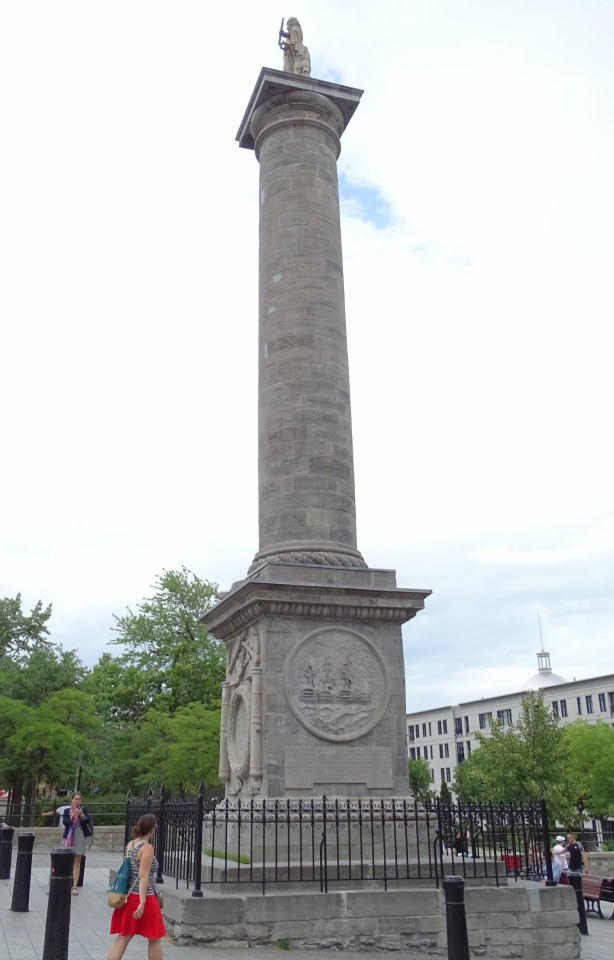
English Vice Admiral Lord Horatio Nelson, 1st Viscount Nelson, was shot and killed during his final victory at the Battle of Trafalgar near the port city of Cádiz on October 21, 1805.
#Nelson's Column#Place Jacques-Cartier#shot#killed#dead#died#travel#English Vice Admiral Lord Horatio Nelson#21 October 1805#anniversary#British history#Montréal#Québec#summer 2015#2018#vacation#landmark#sculpture#old town#Admiral Horatio Nelson by Robert Mitchell#City Hall#cityscape#architecture#tourist attraction#original photography
1 note
·
View note
Text
Horatio Nelson, 1st Viscount Nelson, KB (1758 - 1805) Vice-Admiral of the White
Cuthbert Collingwood and Horatio Nelson: British School, National Maritime Museum (19th century)
Trafalgar Square, London
Related ancestral blog article:
Lords High Admiral of the United Kingdom
Horatio Nelson, 1st Viscount Nelson, KB, Vice-Admiral of the WhiteBirth 29 Sep 1758 in Burnham Thorpe, Norfolk, EnglandDeath 21 Oct 1805 in Battle of Trafalgar, Cape Trafalgar, Spain
agnatic…

View On WordPress
0 notes